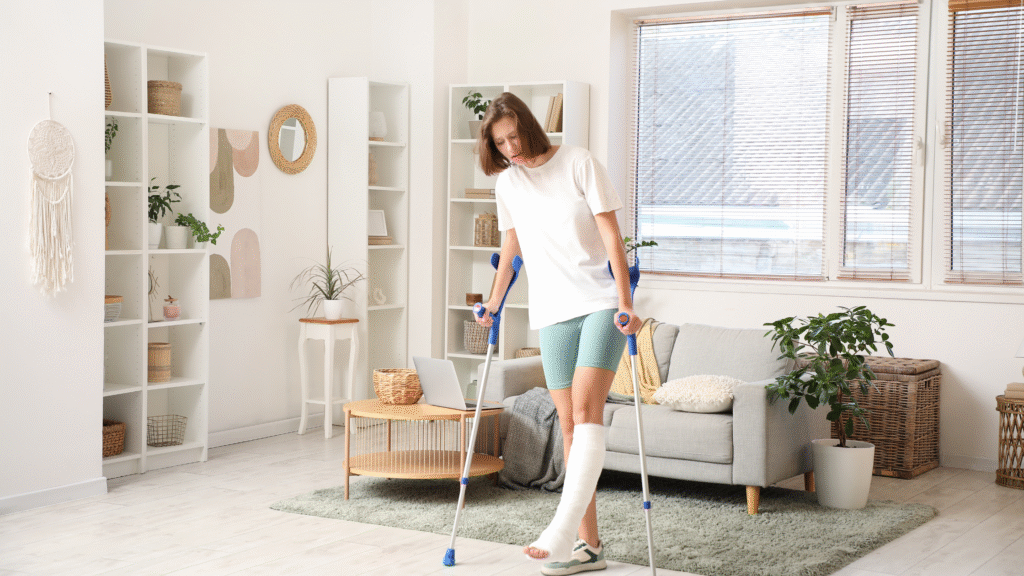
Why complex rehab and home mods matters
Catastrophic and complex claims hinge on the speed and precision of mobility, seating, and home modifications. As cost pressures shift and coverage, standards, and tech evolve, integrated rehab-and-housing programs will be a major lever on total cost of claim (TCOC), cycle time, and injured-worker outcomes.
1) Coverage expansion in CRT continues to ripple through claims
Medicare’s 2023 national coverage decision recognizing power seat elevation on Group 3 power wheelchairs established medical necessity within the DME benefit, prompting downstream alignment by contractors and influencing payer policies. Expect continued uptake and coding/allowance clarity to affect life-of-claim costs and independence planning in 2026.
What to do: Refresh medical policy and utilization management rules for CRT accessories (e.g., seat elevation) and align prior auth pathways so approvals don’t delay discharge.
2) Telemedicine and virtual services normalize for comp
WCRI’s 2025 research highlights both the promise and challenges of telemedicine and AI in workers’ comp. Carriers can expect virtual touchpoints, such as evaluation, follow-ups, and remote troubleshooting of equipment, to remain embedded in 2026, supporting faster service and fewer avoidable delays.
What to do: Define which rehab and housing milestones can be virtual (fit checks, safety walkthroughs) and track turnaround time and re-work rates pre/post adoption.
3) Cost pressure persists; target waste, not just rates
NCCI’s Medical Inflation Insights shows comp medical prices have softened at times, but underlying components and economics still create pressure. In 2026, the carriers that win won’t just negotiate, they’ll remove hand-offs, reduce re-work, and shorten service lead times across rehab tech and home mods.
What to do: Add operational KPIs (days to equipment delivery, days to first successful home-mod visit, returns/re-fits) to your scorecards alongside pricing.
4) Professionalization & ethics in CRT staffing matter
Complex cases require credentialed clinicians. RESNA’s ATP program and Code of Ethics emphasize competency and standards of practice—useful anchors when selecting vendors and setting quality bars for evaluations, configuration, and training that directly affect complications and re-work.
What to do: Require RESNA ATP involvement (and document it) on high-risk seating/mobility cases; audit outcomes by credential presence.
5) Accessibility standards are shaping the scope of home mods
As jurisdictions adopt ICC A117.1–2017 technical criteria, dimensional clearances and reach ranges increasingly inform practical home modifications (doorway widths, turning radii, bath layouts). Expect more precise scopes and fewer “good enough” retrofits in 2026, improving safety and durability.
What to do: Make A117.1-aligned checklists standard in home assessments and require measured drawings or photo-verified clearances before sign-off.
6) Data & AI accelerate triage, if you close the loop operationally
Stakeholders see AI’s potential in comp, but real savings arrive when predictions trigger faster, coordinated actions (e.g., early seating eval, rapid ramp install, or interim loaner equipment). Use AI to spot cases likely to stall and route them into integrated rehab-and-housing lanes.
What great looks like in 2026
- One coordinator, unified scope: Rehab tech + housing under a single accountable team to cut hand-offs and cycle time.
- Virtual first where safe: Tele-evals, video fit checks, remote troubleshooting to prevent avoidable site revisits.
- Credentialed evaluations: ATP-led assessments tied to measurable outcome criteria.
- Standards-based home design: A117.1-informed dimensions baked into every plan.
- Cost + ops metrics: Pair unit cost with time-to-serve, re-work, and RTW-adjacent indicators for a truer TCOC view.
In 2026, carriers and TPAs that combine coverage awareness, virtual workflows, credentialed CRT practice, and standards-driven home mods, inside an integrated operating model, will see fewer delays, safer homes, and lower total costs.
